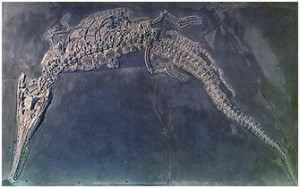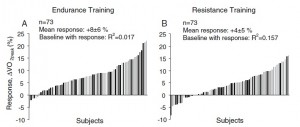There is no denying that if you plan, divide or schedule the training load over time, you are periodising. In the past mainly coming from the East Block several periodisation models have been proposed. We can think about the periodisation model of Arthur Lydiard for the middle- and long distance runners in athletics. But other well-known models have been proposed by East Block sport scientists like Matwejew, Werchoshansky, Platonov, Bondartshuk. I will not go into detail into these models, many people have done that already.
One of the reasons to develop these models is because a lot of athletes did not perform their best performances when it counted, e.g. in major competition and tournaments like Olympic games or World Championships. As Matwejew wrote: only 25-30% of the athletes is performing their year’s best performance at the major competition of that season. They had their best performances before or after the championships. In other words, the majority of the athletes did not “peak” when they were supposed to. One of the factors indeed could be they did not get the right “shape” or “form” in the right time because their planning of the training intensity and/or training volume was not optimal. One neglects the effect of mental factors in this, but I will discuss this in another message.
My main criticism of these existing periodisation models is that they hardly take individual characteristics of the athlete into account. I measured many strong individual differences in the same training load and periodisation.
A few examples of this:
Look at the individual difference in improvement to the same training load over a longer period of time.
Hauttala, A.J; Kieviniemi, A.M; Mäkikallio, T.M; Kinnunen , H; Nissilä, S; Huikuri, H.V; Tulppo, M.V: Individual differences in the responses to endurance training and strength training; Eur.J.Appl.Physiol. Vol.96, 2006, pg. 535-542.
In the picture above you can already see the tremendous differences in responses to a controlled training for two weeks of endurance training (range (improvement ranging from -5 to 22%) and strength training (improvement ranging from -8 to 16%). Some subjects improved a lot, whereas others got worse! It is not said that the ones who did worse did not improve in a later stage, but can you imagine the consequences of periodisation?
From experience we also know that some athletes always seem to peak too early in the season, whereas others will tend to peak too late and others always seem to manage to peak at the right time? Even if the same periodisation model is applied.
What makes periodisation so complex? Mainly three factors:
- the delayed effect of training, especially through accumulation of training effects over the longer term, the success of a periodisation can only be judged afterwards.
- the fact that we do many things in the same training cycle: we train technical skills, tactical skills and conditioning e.g strength, speed and endurance and all these factors interfere with each other sometimes in a positive way, but also in a negative way, influencing the development of fitness as well as shape/form
- many physiological systems are involved in the adaptation to training and the development of fitness and of shape/form: muscle fibre types, psychological factors like resilience, emotion, confidence, but also the hormonal system and the autonomic and centrals nervous systems. And most of the time we have no way to monitor the dynamics of all of these systems.
A practical problem related to periodisation is the trend developed by the globalisation and commercialisation in professional sports, where the frequency of competitions has increased a lot, to the extent that there is no longer a classical preparation period! In many sports we see a lot of competitions all year round, almost non-stop, like in tennis, soccer, baseball, basketball, track and field. In many sports we no longer distinguish classical winter or summer sport with a 6-8 months preparation period. Of course this forces the athlete and the coach or to develop a very smart periodisation or at least make the right choices of when to compete and which competitions to skip in order to train and prepare or to recover.
In my opinion the key to successful periodisation consists of two components:
1. planning and periodisation according to the individual development of fitness and shape in other words: a very careful monitoring of the athlete)
2. more attention for the psychological characteristics of the athlete, the ability to deal with the mental stress of major competitions. But again, this will be the subject of one of my next messages.


